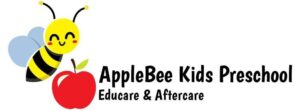Cultivating a Secure and Enriching Pre-Primary Environment for Holistic Child Development
In the journey of early childhood development, crafting a secure and stimulating pre-primary environment plays a pivotal role. Young children are like sponges, absorbing knowledge, emotions, and experiences at an astonishing rate. Creating an environment that ensures their safety, nurtures their curiosity, and supports their growth is crucial. This article delves into the comprehensive aspects of developing a safe and stimulating pre-primary environment, covering everything from physical safety to fostering social and cognitive growth.
Creating a Safe and Stimulating Pre-Primary Environment
As educators, parents, and caregivers, our primary responsibility is to provide a conducive environment that facilitates children’s overall development.
Engaging Paragraphs
Safety First: Ensuring Physical Well-being
A safe pre-primary environment forms the foundation for effective learning. This begins with secure infrastructure – well-maintained classrooms, child-proofed furniture, and appropriate safety measures. Health and hygiene standards are equally paramount. Regular sanitization, proper waste disposal, and adherence to health guidelines contribute to the well-being of both children and staff.
Engaging Spaces: Igniting Curiosity
Young learners are naturally curious. Designing playful learning corners and incorporating interactive educational tools creates an environment that piques their interest. Colorful and engaging spaces foster exploration and experimentation, transforming learning into an exciting adventure. Absolutely! Young learners thrive in environments that stimulate their curiosity and create a sense of wonder. By designing playful learning corners and incorporating interactive educational tools, we can truly capture their attention and fuel their desire to explore and discover.
Colorful and engaging spaces play a vital role in creating an environment that sparks interest. Vibrant hues not only make the learning area visually appealing but also help to enhance engagement levels. When children are surrounded by captivating colors, they feel energized and motivated to delve into the learning materials before them. Furthermore, interactive educational tools offer an excellent way to make the learning experience more dynamic. Whether it’s hands-on activities or digital resources, these tools provide young learners with opportunities for experimentation and problem-solving.
Through these interactive elements, children can actively participate in their own education, transforming the process into an exciting adventure. As educators or designers, our goal is to foster a love for learning within young minds at an early age. By creating inviting spaces filled with playful corners and incorporating interactive tools, we not only capture their interest but also encourage them to embrace knowledge as something enjoyable. Let’s continue nurturing this natural curiosity in our young learners so that they can embark on an exciting journey of discovery!
Social Learning: Nurturing Interpersonal Skills
The pre-primary years are crucial for developing social skills. Collaborative play activities encourage teamwork and empathy. Effective communication is essential, whether it’s helping children express their emotions or teaching them to listen actively. These skills lay the foundation for healthy relationships later in life.
Emotional Comfort: Fostering a Sense of Belonging
Creating a warm atmosphere is key to making children feel at home. A welcoming environment, coupled with opportunities for self-expression, helps children build confidence and a sense of belonging. When children feel emotionally secure, they are more open to learning and exploring.
Varied Sensory Stimulation: Enhancing Learning
Young children learn through their senses. Incorporating a variety of colors, textures, and multisensory activities enriches their experiences. Such stimulation promotes cognitive development, making learning more enjoyable and effective.
Structured Routine: Providing Predictability
A consistent daily schedule with smooth transitions gives children a sense of predictability. This stability helps them feel secure and fosters a conducive learning environment. Clear routines also teach valuable time-management skills.

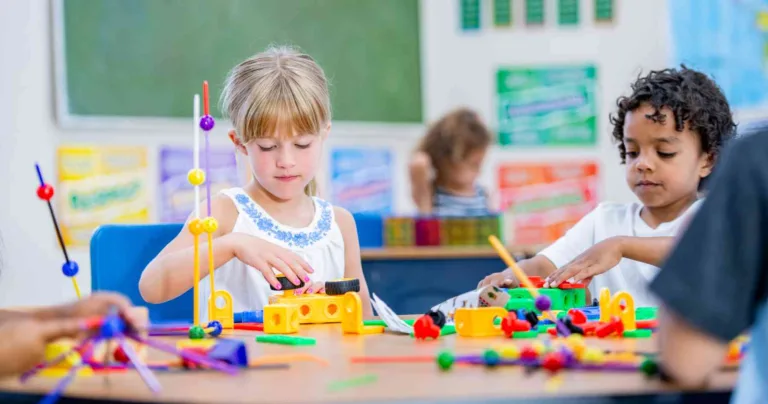
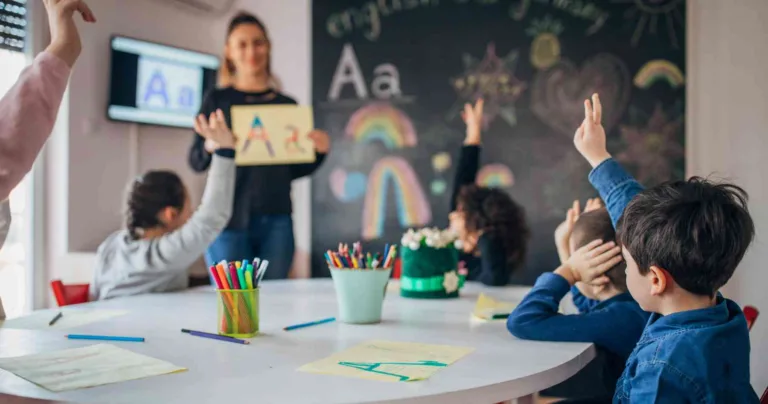

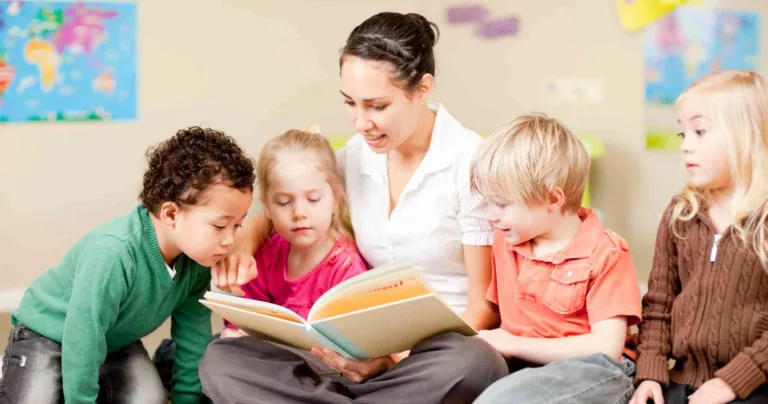
Get In touch
Leave us a message
4 Claret Road, Table View, 7441
(021) 556 4146
office@applebeekids.com
Cognitive Development: Building Young Minds
Stimulating educational materials and problem-solving opportunities challenge young minds. Interactive puzzles, age-appropriate books, and activities that encourage critical thinking support cognitive growth and prepare children for future academic success.
Parent-Teacher Collaboration: Holistic Approach
Open communication channels between parents and teachers create a strong support system. Regular updates on a child’s progress and involvement in learning activities at home bridge the gap between school and family, nurturing comprehensive development.
Outdoor Exploration: Connecting with Nature
Nature-inspired playgrounds and outdoor expeditions provide children with valuable connections to the natural world. Outdoor learning enhances physical development, fosters an appreciation for nature, and ignites curiosity about the environment.
Technology Integration: Balancing Screen Time
In today’s digital age, technology plays a role in education. Integrating educational digital content in a mindful manner offers a balanced approach. Age-appropriate apps and interactive tools can supplement traditional learning methods.
Inclusivity: Embracing Diversity
A diverse environment is enriching for young minds. Diverse books, resources, and celebrations of various cultural festivals promote inclusivity and broaden children’s horizons.
Nutrition Matters: Supporting Healthy Habits
A balanced meal plan and nutrition education teach children about healthy eating habits. Proper nutrition supports their physical and cognitive development, setting the stage for a lifetime of wellness.
Artistic Expression: Unleashing Creativity
Art, music, and movement activities encourage creativity and self-expression. Displaying children’s creations in the classroom nurtures their confidence and reinforces the value of their individuality.
ExcellentBased on 28 reviews Trustindex verifies that the original source of the review is Google.
Trustindex verifies that the original source of the review is Google. Pieter Kotze2022-03-11Great pre-primary school in Table View, it has been there for many years and we are now on the verge of sending the 2nd generation there and although they have been around for years, the staff are current and up to date with the latest in childcare and early childhood education, peace of mind for sure...Trustindex verifies that the original source of the review is Google.
Pieter Kotze2022-03-11Great pre-primary school in Table View, it has been there for many years and we are now on the verge of sending the 2nd generation there and although they have been around for years, the staff are current and up to date with the latest in childcare and early childhood education, peace of mind for sure...Trustindex verifies that the original source of the review is Google. Gareth Bolt2021-08-20Jackie,Maude and Applebee team look after our little boy so wonderfully!Trustindex verifies that the original source of the review is Google.
Gareth Bolt2021-08-20Jackie,Maude and Applebee team look after our little boy so wonderfully!Trustindex verifies that the original source of the review is Google. Shakurah Hackley2021-08-20My son loves his teachers. They care for our kids and go the extra mile.Trustindex verifies that the original source of the review is Google.
Shakurah Hackley2021-08-20My son loves his teachers. They care for our kids and go the extra mile.Trustindex verifies that the original source of the review is Google. Nolu Mandindi2021-08-19My daughter been a student since 2019, her brother joined her in 2021, we couldn't be happier with the professionalism shown by the staff. The constant feedback from teachers on progress is on point.
Nolu Mandindi2021-08-19My daughter been a student since 2019, her brother joined her in 2021, we couldn't be happier with the professionalism shown by the staff. The constant feedback from teachers on progress is on point.
Nurturing a Positive Learning Environment
Creating a positive learning environment is crucial in enhancing the learning process and ensuring that students have a healthy environment that supports their academic and personal growth. A positive learning environment helps students feel comfortable, engaged, and motivated to learn. It can be achieved by establishing a classroom culture that encourages respect, collaboration, and open communication among students and with the teacher. Additionally, a positive learning environment involves setting clear expectations and creating a supportive and inclusive atmosphere that recognizes and celebrates the diversity of the learners.
Nurturing a positive learning environment requires the conscious efforts of the teacher and the students, and it must be cultivated and maintained consistently throughout the academic year. In this article, we’ll explore some of the key strategies that teachers can use to foster a positive learning environment and create a memorable experience for their students.
Collaborative Partnerships for Success
Collaboration between educators, parents, and the community is vital for creating a safe and stimulating pre-primary environment. When teachers and parents work together, children benefit from consistent support and guidance, both at school and at home. This collaboration enhances learning experiences and helps children develop a strong foundation for future education.
Establishing Open Lines of Communication
Clear and open communication channels between teachers and parents foster a positive learning environment. Regular parent-teacher meetings, progress reports, and updates on classroom activities keep parents informed about their child’s development. This transparency encourages parents to actively engage in their child’s learning journey.
Involvement Beyond the Classroom
Encouraging parents to actively participate in school activities and events strengthens the sense of community. Family workshops, volunteering opportunities, and educational outings provide parents with insights into their child’s daily experiences and allow them to contribute to the learning process.
Our different age groups:

Baby Service:
Our Baby Care Service caters for 3 different age groups, namely: * Birth to 12 months * 13 months to 18 months * 19 months to potty trained (approx 24 months) – Each baby has his or her own cot & locker. – The daily routine is adapted & individualised for each baby from birth to 18 months. – An age appropriate stimulation programme is introduced from 4 months. Our baby classes are staffed by loving, caring & patient staff.
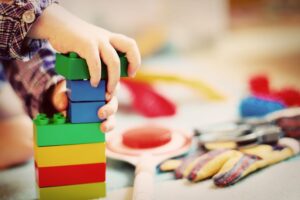
Educare:
Our Educare Service caters for children in two age groups: * 2-3 year olds (the year they are turning 3) * 3-4 year olds (the year that they are turning 4) Programme: Our qualified teachers follow an ECD programme that is in line with the CAPS curriculum and that stimulates early academic & emotional development. Parents are provided with 2 progress reports during the year, 1 in June and 1 in December. Classrooms: Our classrooms are very spacious, well equipped and hygienic.

Pre-primary:
Our Pre-primary Programme caters for GrRR (4 year olds turning 5) & GrR (5year olds turning 6) Educational Programme: Teachers in the Pre-primary Programme follow the CAPS curriculum for preschoolers as directed by the WCED. Our Pre-primary section is separately registered with the WCED under registration number 0103008281 (temporary until final registrations complete). Pre-primary Hours: 8:30am until 12:45pm * Aftercare is optional extra
Crafting a safe and stimulating pre-primary environment requires a holistic approach that considers physical safety, cognitive development, emotional comfort, and more. By embracing the key elements outlined in this article, educators, parents, and caregivers can create a space where young learners thrive, grow, and develop into well-rounded individuals.

